
LOCATION
Meru Conservation Area, Kenya, east Africa.
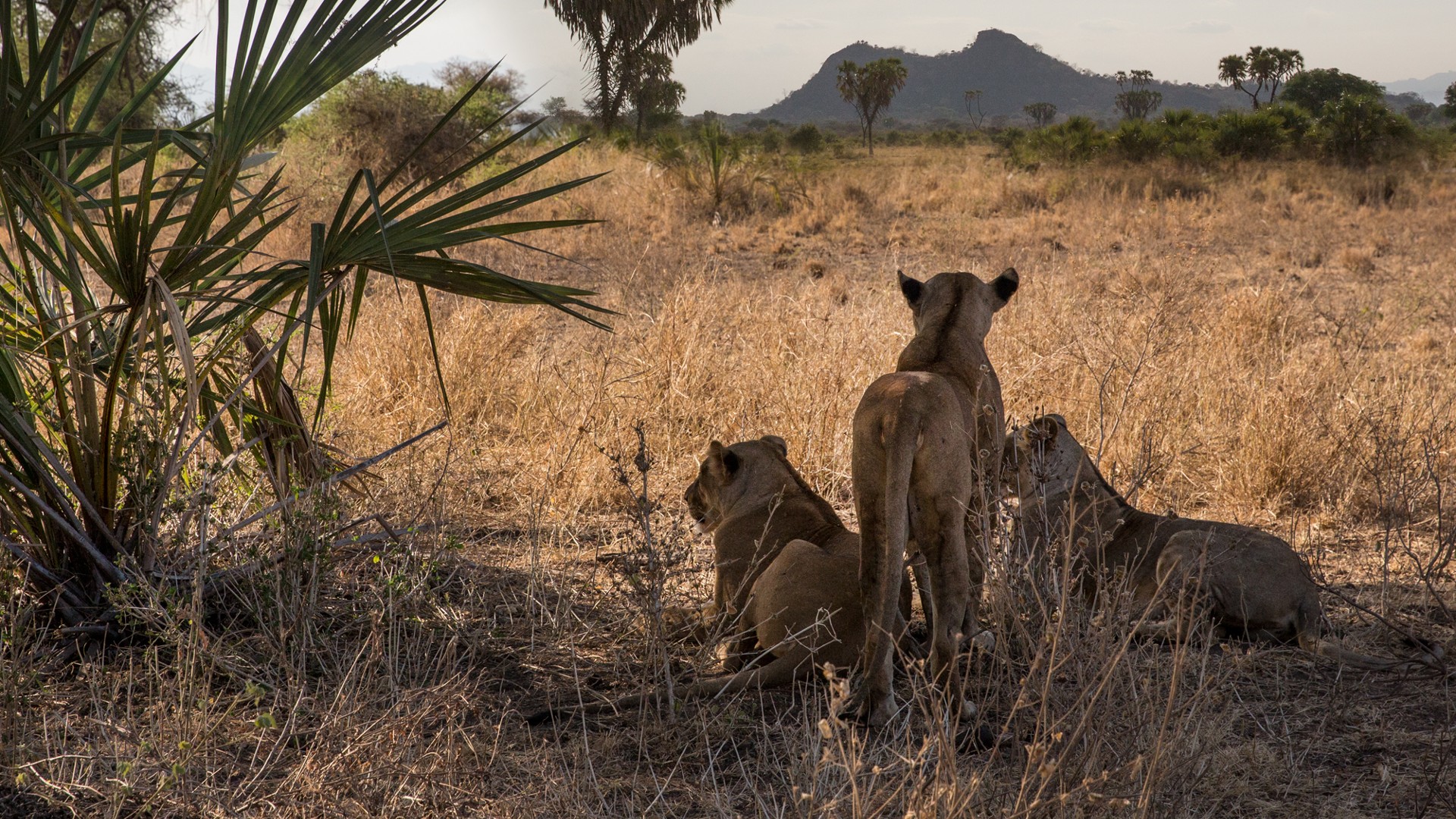
Through our Pride of Meru Programme, we aim to reduce human-carnivore conflict and promote coexistence between people and carnivores in the Meru Conservation Area, Kenya.

Meru Conservation Area, Kenya, east Africa.


Human-lion conflict and retaliatory killings; habitat loss; prey depletion; an unpredictable climate and drought.

Conflict mitigation tools; human-carnivore conflict toolkit; conservation education; conservation ambassadors; lion monitoring; citizen science scheme; community camera-trapping.

Kenya Wildlife Service, Wildlife Research and Training Institute, Leo Foundation, Sheldrick Wildlife Trust, local communities.

2014
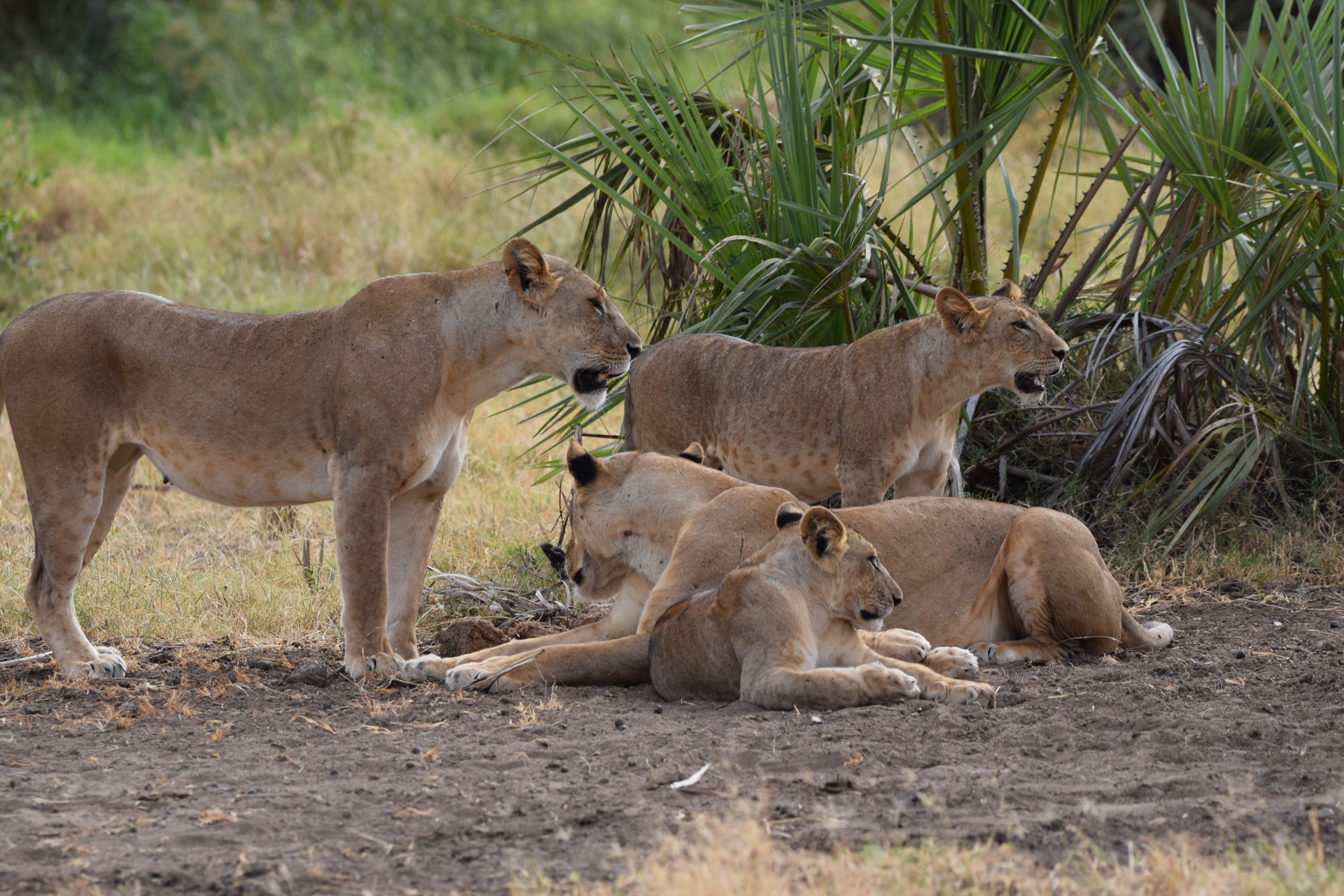
Elsa’s Pride, Meru © Born Free
Lions are classified as Vulnerable by the IUCN, and their global populations are decreasing. According to the last National Wildlife Census in 2021, there are now only an estimated 2,589 lions remaining in Kenya.
The Meru Conservation Area is a 722,000 miles2 (1.87 million km2) area comprised of Meru and Kora National Parks and Mwingi and Bisanadi Wildlife Reserves and is surrounded by community lands.
Meru is where the story of Born Free began, where George and Joy Adamson taught Elsa the lioness to be wild and free; where she mated and had cubs, where she truly became a lioness. Since 2014, the Pride of Meru programme has been determined to keep the legacy of Elsa alive.
The first years of the programme were spent surveying the lions of the park to understand more about this population that had largely been understudied and unknown to the world since George was murdered in 1989. We have since established a comprehensive database of each individual lion with in-depth information about their behaviour and life histories. Our database now contains more than 70 mature lions (over 1 year old) living in Meru National Park.
In recent years, our main goal has been to reduce human-carnivore conflict, which threatens the long-term survival of lions and other carnivores in Meru. We promote coexistence through education and initiatives which provide tangible benefits for people.
For people living in Meru, keeping livestock is central to their lives, both culturally and economically. However, lions and other carnivores such as hyenas and leopards can attack and kill sheep, goats, and cattle, leaving rural families, many of which are living in poverty, with the devastating consequences of losing critical income and the psychological impacts of the attack. Attacks can lead people to seek revenge, and kill carnivores, particularly lions.
It is vital that we reduce this deadly conflict and empower people to protect their livestock while improving attitudes and perceptions towards wildlife and conservation.



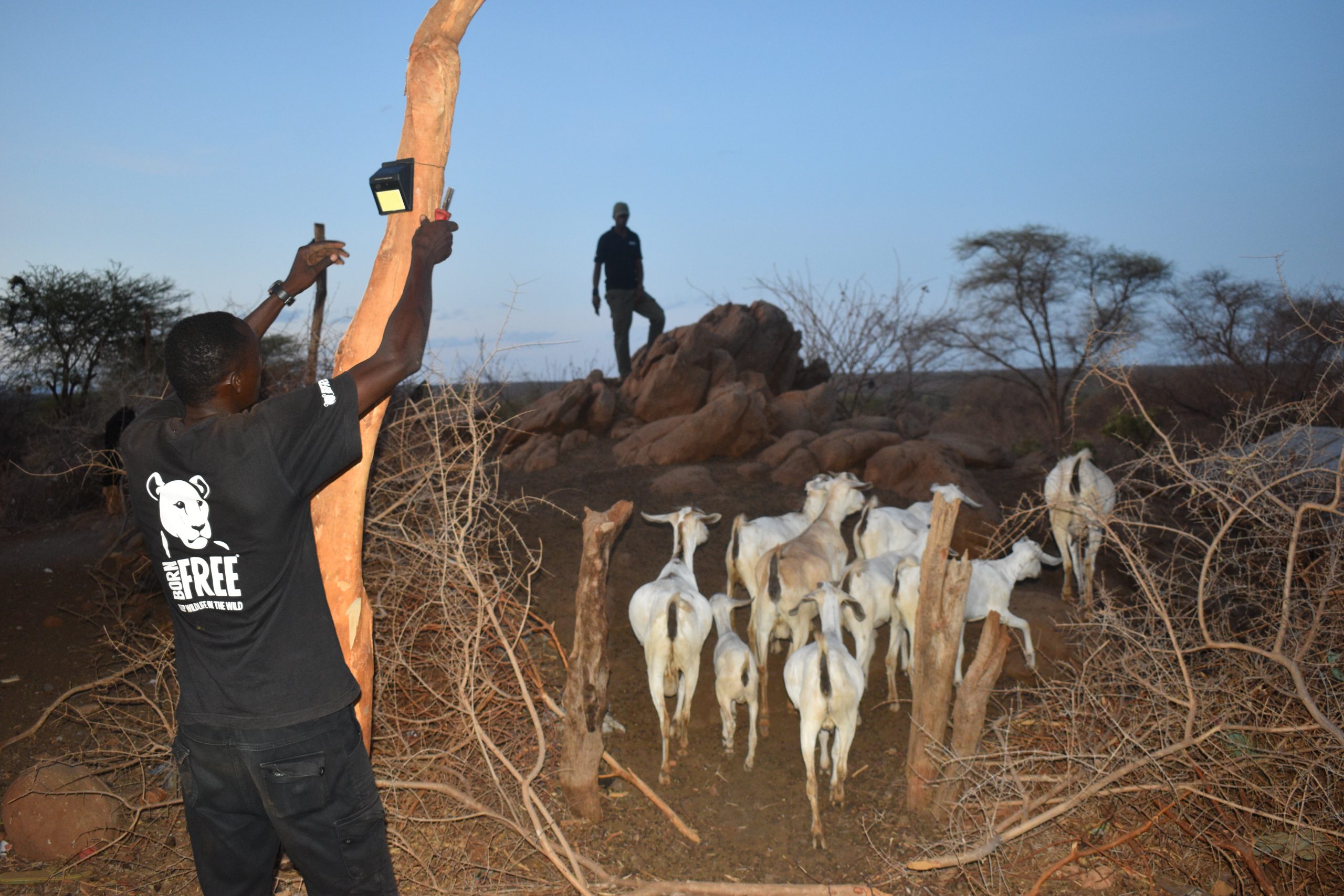
Predator-deterrent lights being installed on a livestock enclosure © Born Free
We trial simple, cost-effective, and scientifically proven methods to help empower rural, farming families to reduce human-carnivore conflict.
Predator-deterrent lights are solar-powered flashing units that we install around bomas (purpose-built enclosures which keep livestock safe from predators). The flashing light disrupts night vision and deters large carnivores from approaching the area, as they associate the light with people, who they tend to avoid. Trials are on-going but initial results suggest that this could be a successful method to prevent livestock predation.
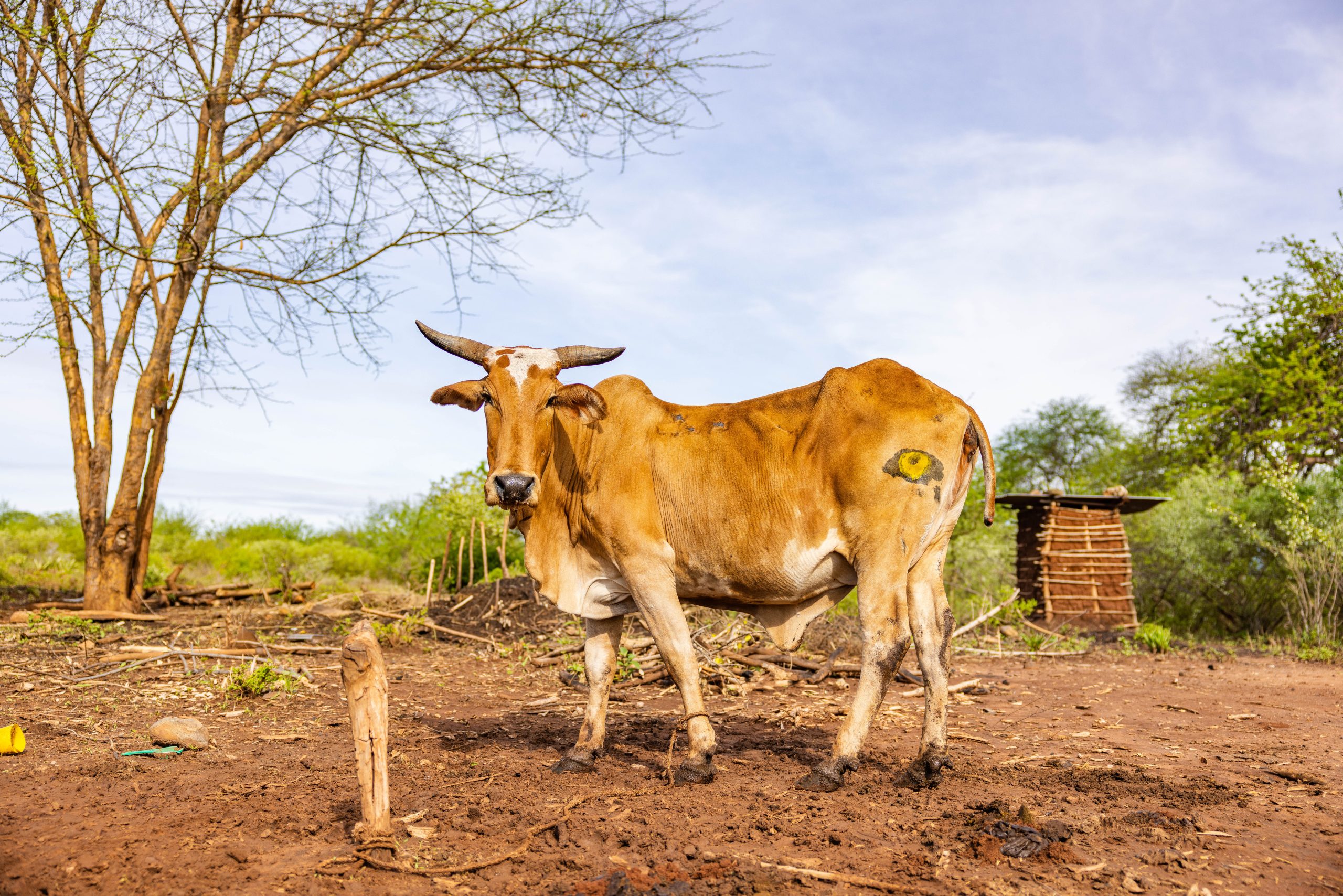
Cattle with eyespots painted on their rears © Peter Ndung’u
The eye-cow technique involves painting eye spots on the rumps of cattle to deter lions from attacking. Lions are ambush predators, and the eye spots give the impression that the cattle are facing towards them. More trials are needed to determine the effectiveness of this method at preventing livestock predation in Meru. Initial observations are very positive and livestock owners are keen to use the method.
We implement a variety of activities to improve community awareness and engagement in conservation efforts and provide community benefits to promote coexistence. This includes ‘Kick to Conserve’, which brings together thousands of community members either playing or watching football matches throughout the year.
The language of football is universal: from all sides of the pitch, common ground can be found, offering unique opportunities to learn from each other and gain perspective. We harness the power of football to deliver messages about wildlife and conservation while engaging the energy of footballers and fans, through litter-picks and tree planting sessions before or after the matches.
We also use comedy to deliver our messaging through the Kangaroo Actors who bring the issues of wildlife conservation to life through humour and drama.
Our Conservation Ambassadors are key members of our team. Each Ambassador, who has shown a huge passion for wildlife, has been selected from their community and trained in key skills. Coming from communities where livestock, including their own, have been attacked and killed by carnivores, they have a deep understanding of the issues and complex nature of living alongside wildlife. Seeing both sides of the issue, they are crucial to all areas of our work.
Each Conservation Ambassador collects data on conflict incidents in their community and works closely with rural families and wildlife authorities to get help and support after an attack. With the vast majority of our work based in communities, our Conservation Ambassadors are instrumental in helping deliver whatever is needed whether it is focus group discussions, sensitisation meetings, questionnaire surveys, mitigation method installation and many other activities.
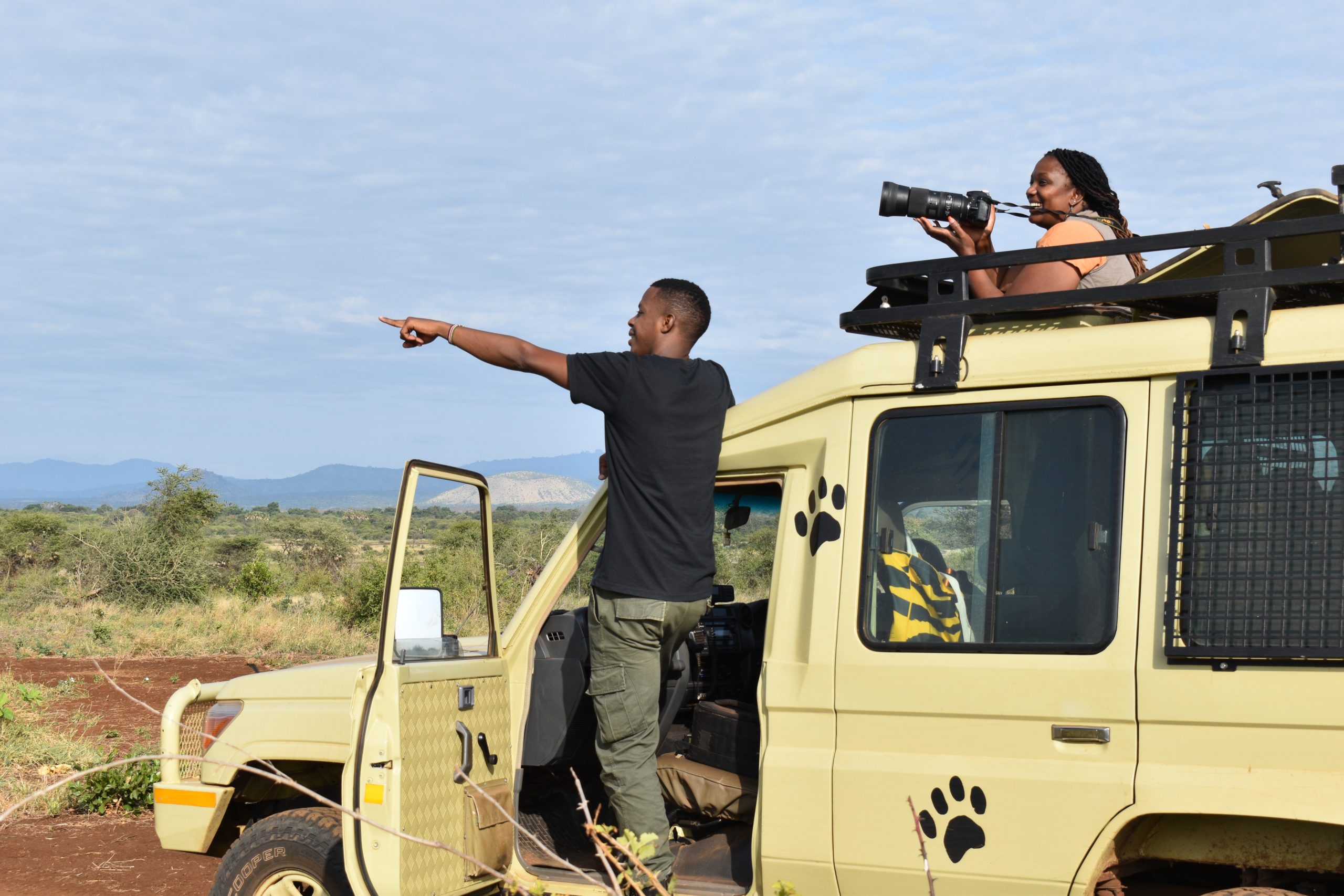
Pride of Meru team monitoring lions in the field © Born Free
Since its conception, the Pride of Meru programme has led the monitoring of the lion population in Meru National Park. The team have an established and highly detailed ID database of the lions living in Meru. Our lion monitoring work is increasingly moving outside of the park and into community areas, where many lions roam. Monitoring outside of the park itself will enable the team to build on their current understanding of how lions live alongside humans in more built-up areas and monitor trends and patterns of conflict.
Utilising the immense power of ‘citizen science’, we train and equip tourist guides (and therefore tourists) to collect lion monitoring data, including photos, when out on safari. With more eyes on the ground, we can generate considerable high-quality data on lion sightings, distribution, health, and pride composition. This allows us to gather important information whilst simultaneously engaging tourists in the importance of lion conservation efforts in Meru.
The benefits of living alongside wildlife can be difficult to recognise for some people living in rural communities. To promote the benefits of conservation to local people, we will launch a Community Camera-Trapping scheme. We will give communities a set of camera traps to capture images of the wildlife on their doorstep and use a points system to create a competition based on the variety and number of species recorded.
Images of threatened species, such as lions and elephants, earn the most points. The top scoring community wins a reward at the end of each competition round. The rewards are chosen directly by the communities themselves and could be anything from school equipment to toilets. Community Camera-Trapping is inexpensive and can help directly link the presence of wildlife to local benefits, thus empowering people to embrace conservation activities.
Photographic data from these camera traps will also help us understand the movement of lions out of the park and into the community and even allow us to identify the individual lions which are doing so.
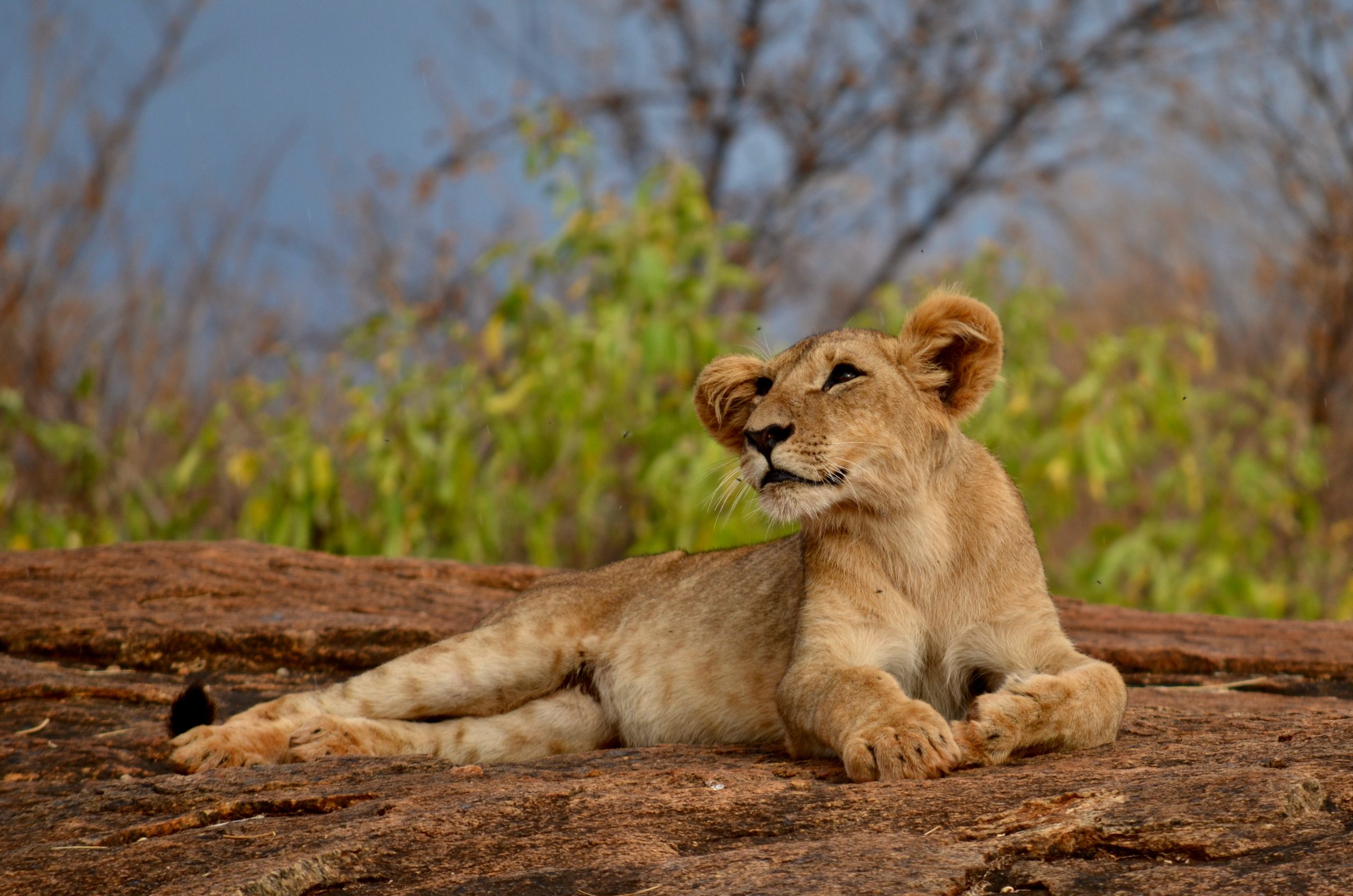
A cub from the Mulika Pride, Meru © Mateo Bal
We strive to ensure that all our conservation programmes are evidence based and that we can show the impact of our work. We do this in several ways:
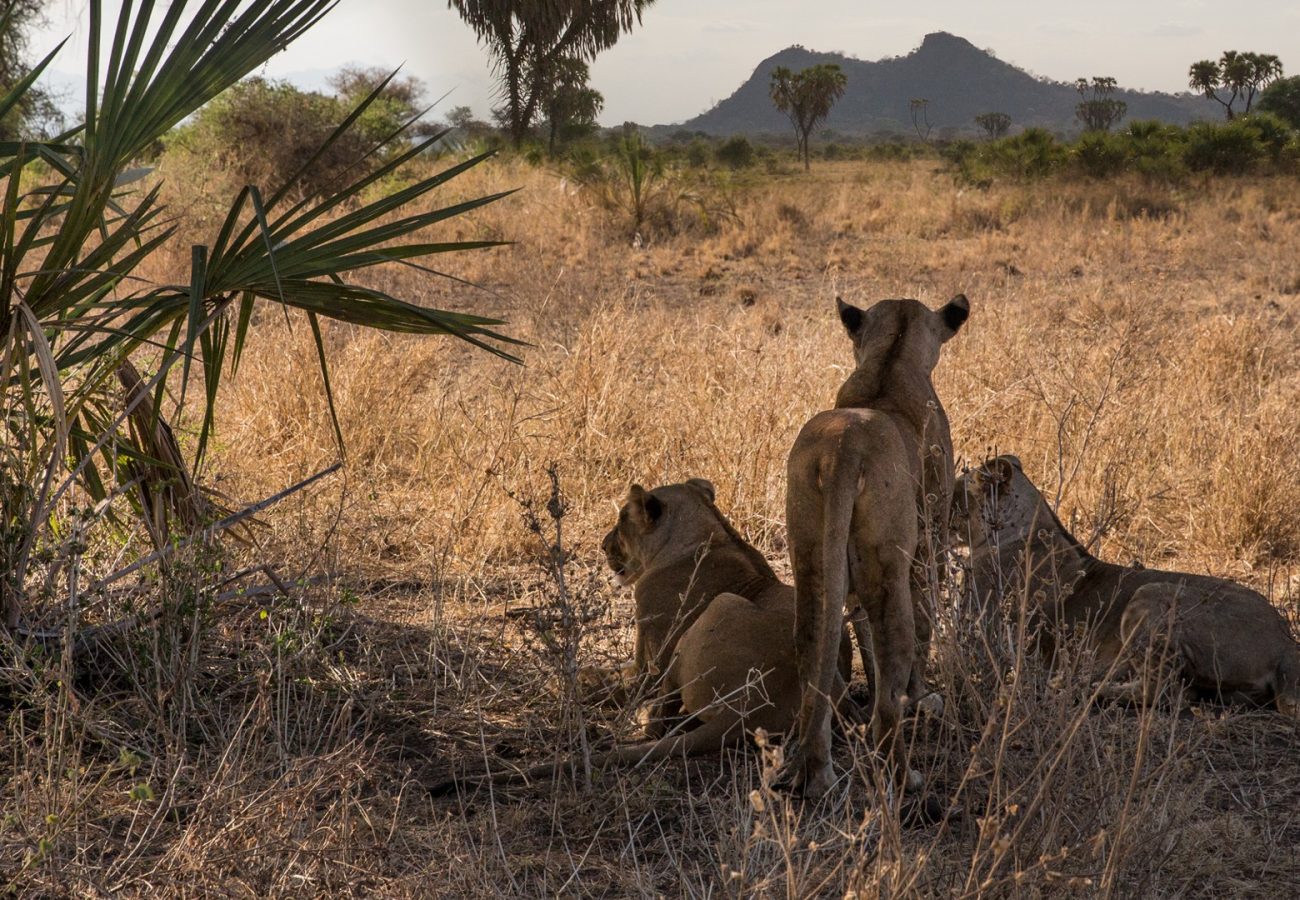
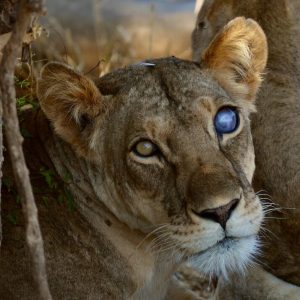
Silver Eye from the Mulika Pride (c) Mateo Bal
*As of March 2023
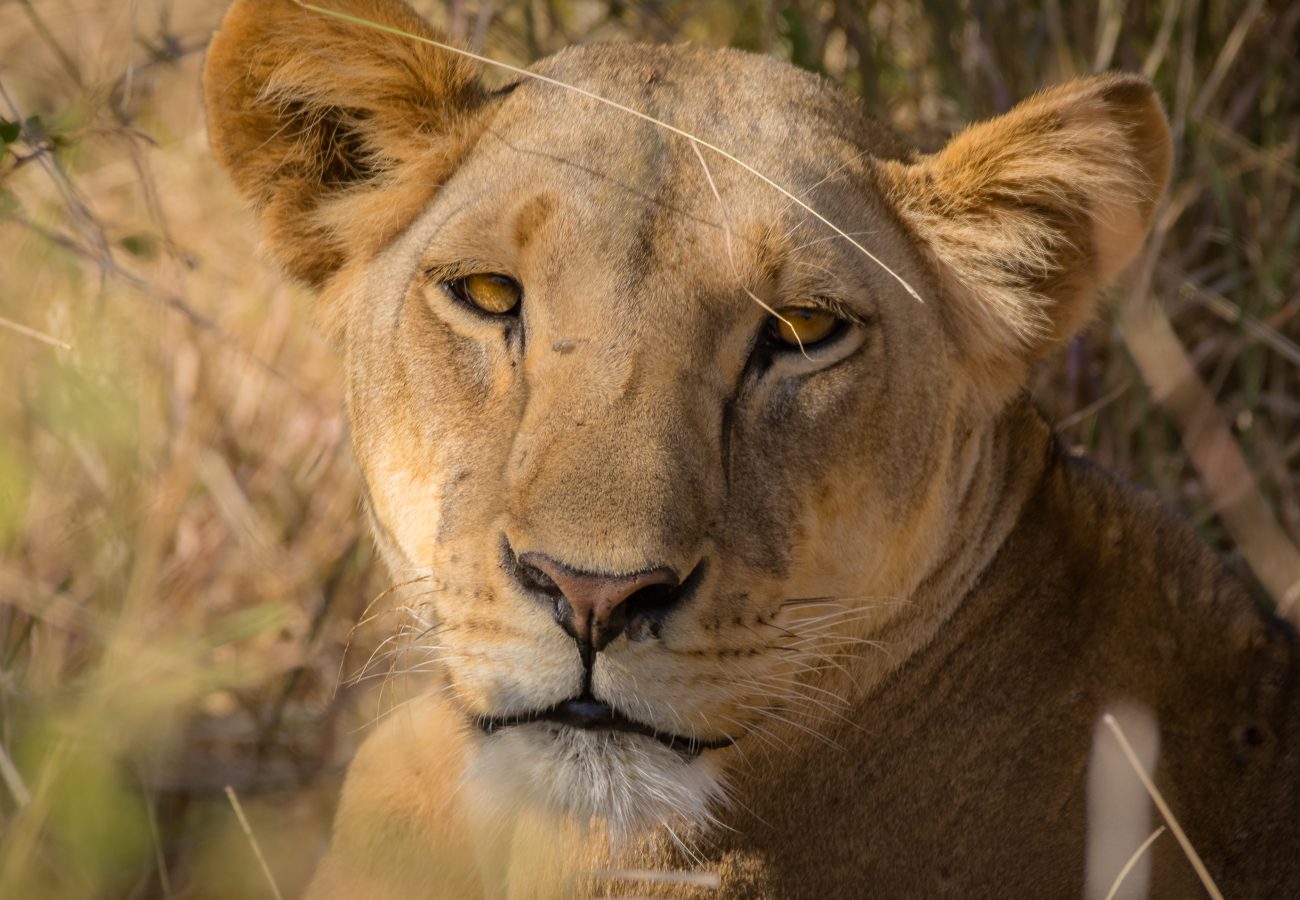
Giving a gift today will help Born Free continue our vital work to protect this iconic species.